What’s your motto?
Mike’s friend Kevin used to ride a motorcycle. He belonged to a group that took long rides on the weekends. They toured the Indiana countryside and usually had a restaurant picked out for lunch along the way. Kevin said their motto was “Live to ride. Ride to eat”.
We’re not bikers, though a vintage Triumph will turn Mike’s head every time. But we understand the sentiment. Our motto could easily be “Live to travel. Travel to eat.” When we plan a trip to a new place, one of our first steps is to figure out the food itinerary. We did that for our most recent trip to Madrid and Valencia in Spain.
Start with the Guidebook
Our planning starts when we consult our “Guidebook”, “1,000 Things to Eat Before You Die”, to see what dishes or food items we should eat while we’re there or buy to bring home. Mimi Sheraton, the author, is an award-winning American food writer and critic. Her book has been indispensable to us as a guide to local cuisine around the world.
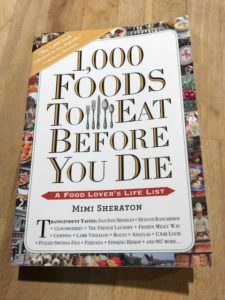
One chapter in the book is devoted to “Spanish and Portuguese” foods. We focused on items that we haven’t found in Portugal and created our list of foods for the trip.
What we bought
Our first stop in Madrid, like in most cities we visit, was a grocery store. We learn a lot by looking at what the locals are buying and checking the prices of common items like milk, bread, eggs, and wine.
And we always buy a bag of the local chips.
We didn’t have to go very far. Across the street from our hotel was a huge (like 3 city blocks!) El Corte Inglés department store. We headed for their mercado in the basement and started ticking things off our list.
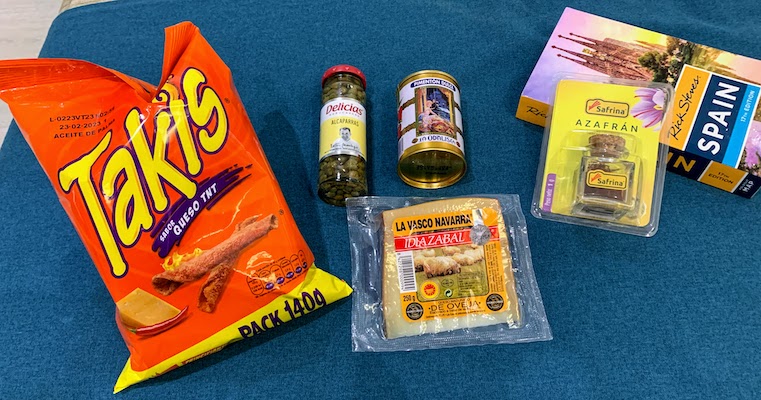
Capers
Sure, we can buy capers anywhere, but why not get some from one of the primary sources? Mimi notes that capers “flourish in stony, dry as dust landscapes, most notably in southern Spain”.
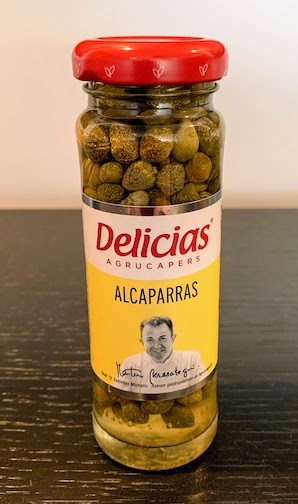
Saffron
Mimi calls saffron “the 24-carat gold of the culinary world”. Saffron threads are the inner stamens of a particular crocus plant. It takes 75,000 blossoms to get a pound of saffron threads and,according to Mimi, much of the best saffron is grown in the La Mancha area of central Spain. Mary is planning to make a risotto dish with saffron and chorizo, so we bought a small jar in Madrid. (We’ll publish the recipe and a review in an upcoming post…stay tuned!)
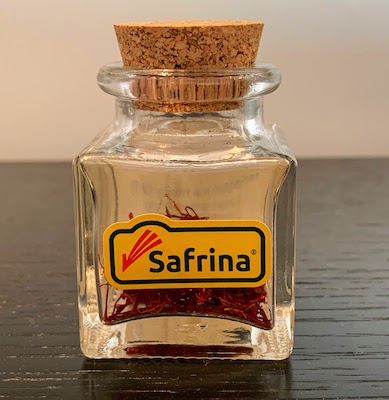
Pimentón (Spanish paprika)
It’s made from Spanish red chili peppers, smoke-dried and then pulverized. We bought a small can of Pimentón dulce (sweet paprika). Later, at another shop, we found Pimentón picante (hot paprika).

Here’s a good description of Spanish paprika and how it is used in Spanish cuisine.
Bonus items
These were not in Mimi’s book, but they are things we always look for.
Chips
We like to sample potato chips wherever we go. But on this trip, what caught our eye was a bright orange bag of Takis, a snack we’d never tried.
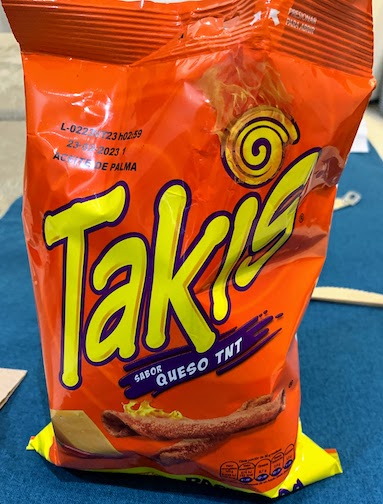
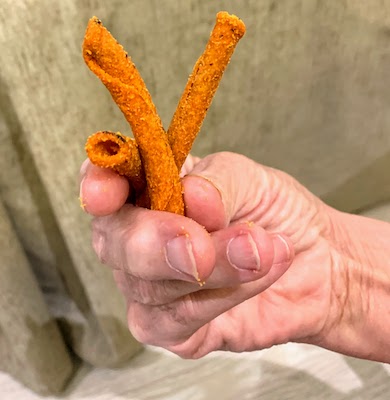
We had seen these somewhere before, but couldn’t remember where. They were a pretty good snack – crunchy and spicy hot.
Wine
Mike had an “aha” moment in the wine department. On a previous trip to Barcelona, he had enjoyed a variety of Spanish wine called Ribera del Duero.
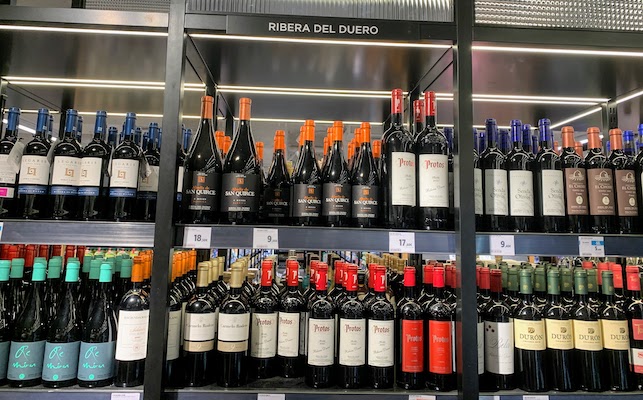
Standing in the el Corte Ingles, he realized that the “Duero” in Spain was the “Douro” in Portugal – the river that flows past Porto. DOH!
The things we ate
Cheese
We went looking for four different types of Spanish cheese that we’ve never found in Portugal. We found one at the grocery store. Others we tasted in the Mercado San Miguel in Madrid and in the tapas bars. All were delicious, but we have a new favorite.
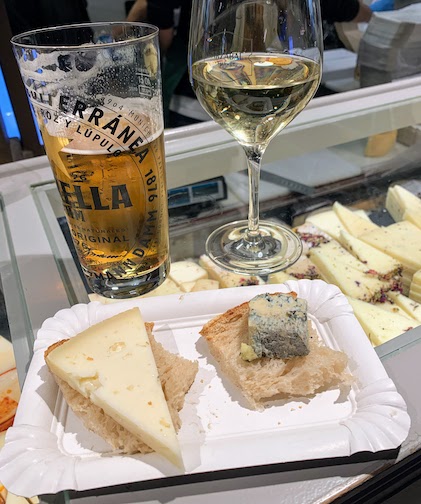
Manchego – one of the most popular Spanish cheeses. It’s made from the milk of long-haired sheep from the La Mancha region. It has a mild flavor, slightly salty and nutty.
Cabrales – a blue cheese made from the combined milks of cows, sheep, and goats. Very fragrant – some would say pungent. It paired well with a cold beer at lunch time.
Idiazábal – a dense, nutty sheep’s milk cheese from the Basque country. We enjoyed it with a glass of wine in our hotel room.
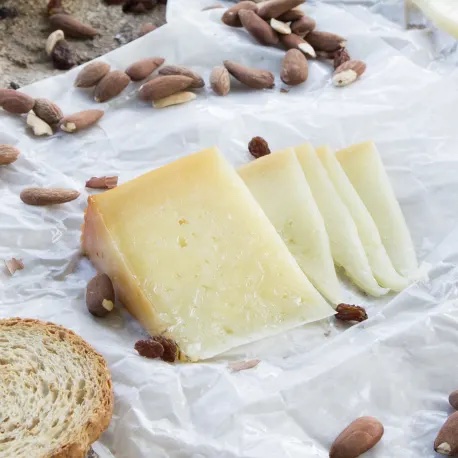
And the winner is
Torta del Casar – made from sheep’s milk, it is very soft and creamy, almost a liquid.
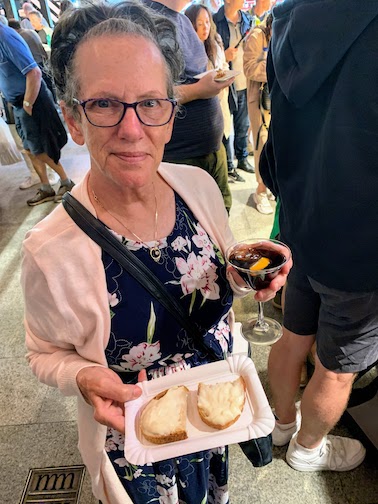
We tried it at a cheese shop in the Mercado San Miguel in Madrid and liked it so much that we went back for more the next day. It was delicious on bread, accompanied by a vermut or a glass of wine.
Mary reflected on our cheese tasting experience and concluded that there was a right way to do it:
Buy the whole round of cheese. Take it back to your hotel room. But buy some damn bread to go with it. Back in the US we always served cheese with crackers, because the US has great crackers. But Europe has great bread and there is no better way to eat cheese than having it with good bread.
Churros
These are slender, deep-fried pastries. We ate some at the Chocolateria San Ginés in Madrid, where they’ve been making them since 1894.
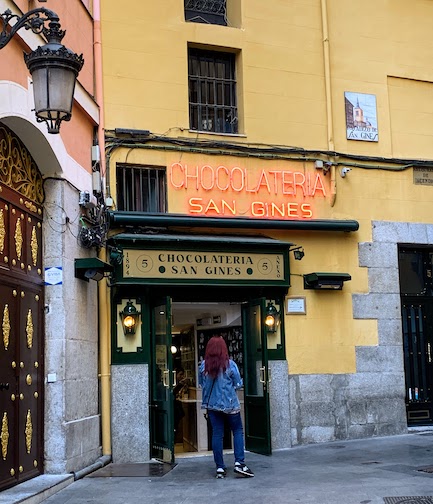
This is one of those places where you don’t have to say much more than “yes” or “si” to place an order. Step up to the counter and the conversation goes like this:
Smiling woman behind the counter: “Churros com chocolate?”
You: “Si”
Smiling woman: “Coffee?”
You: “Si”
And you’re done. Now go enjoy that sweet, chocolatey goodness!
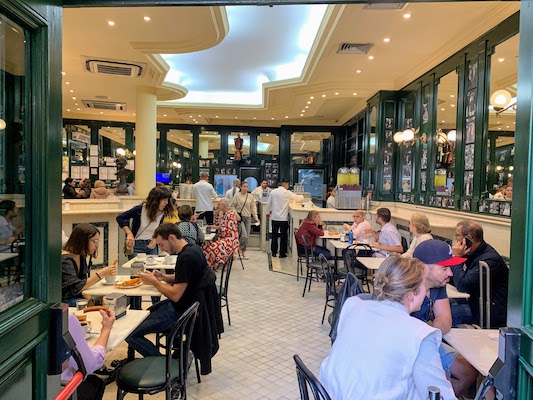
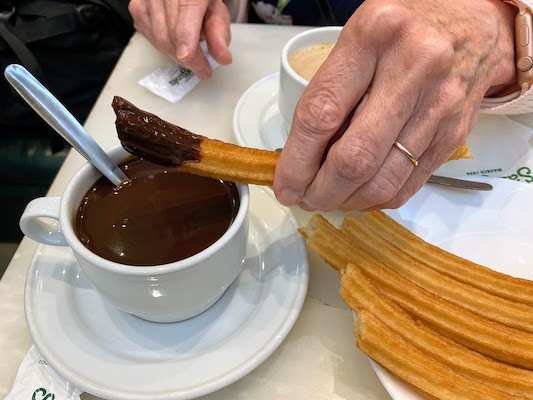
Jamón
Mimi says “no ham has a more noble heritage than Spain’s”. There are entire stores devoted to jamón.
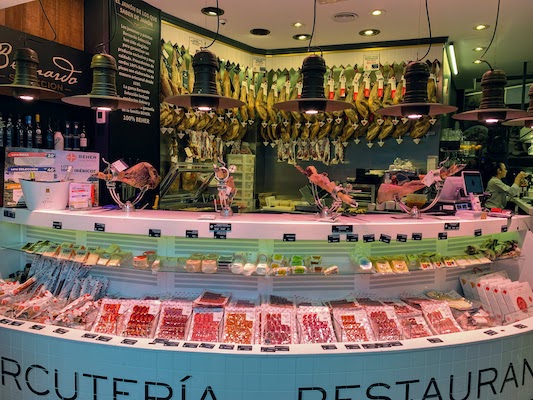
Mike honored that heritage every chance he got – having jamón at breakfast, lunch, and dinner.
Tapas
We tried tapas – small dishes – everywhere we went. One night in Madrid, we visited two different tapas bars and were given small plates to accompany our wine.

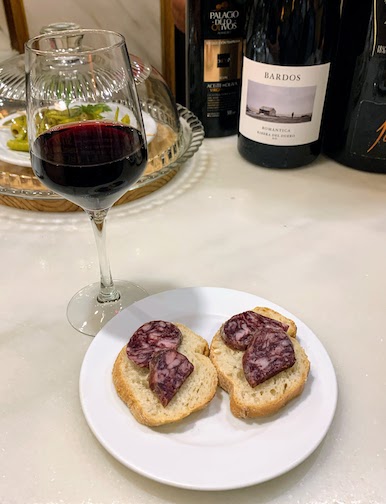
At the Mercado San Miguel in Madrid, we sampled cheeses and olives from what seemed like an endless array of choices.
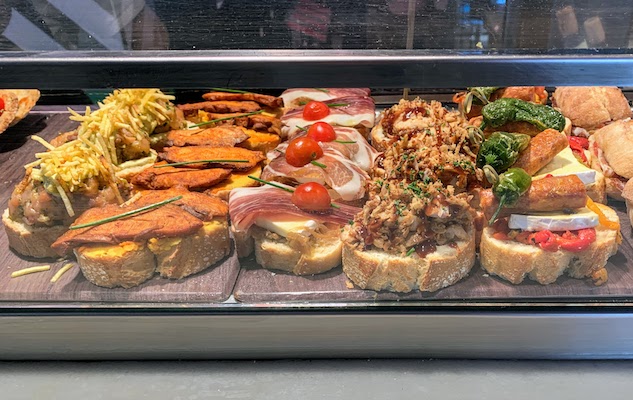
And in Valencia, we followed a recommendation from our friend Heather and visited the Taberna Antonio Manuel, a tapas bar around the corner from our hotel. The food was so good we went back the next night.
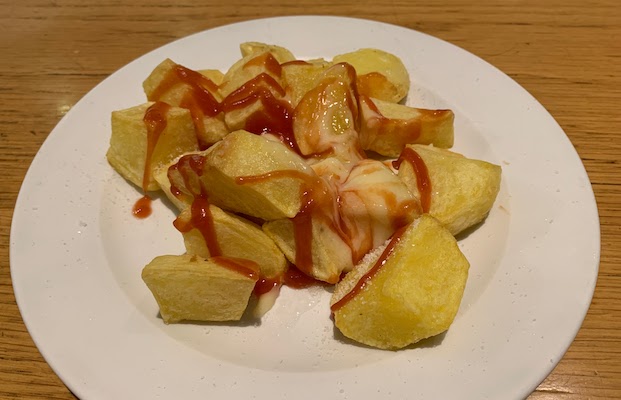
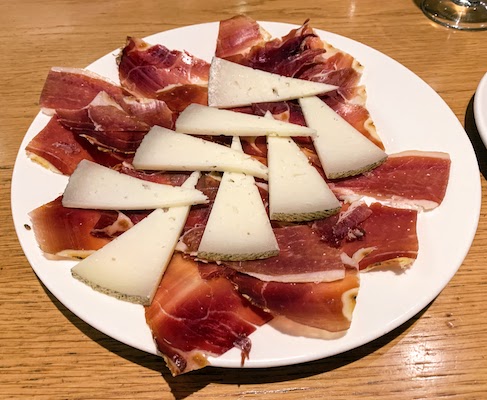
What we missed
Paella
We had planned to eat paella, a rich stew of rice with meat, chicken or seafood, in Valencia, where it originated. But after a long day of exploring the city, we didn’t have the energy to find a place. So now we have a reason to come back again.
Only 773 to go
Mike did a quick count of how many of the 1,000 foods we’ve eaten: 227. So we have lots more opportunities to try new and different foods.
We’ll have more on our trip to Madrid and Valencia in future posts.
What new food have you tried lately? Give us a review in the comments below or with a note via the Contact Us form.
Until next week / Até a próxima semana
Mary and Mike
The Cook and The Writer
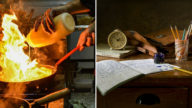
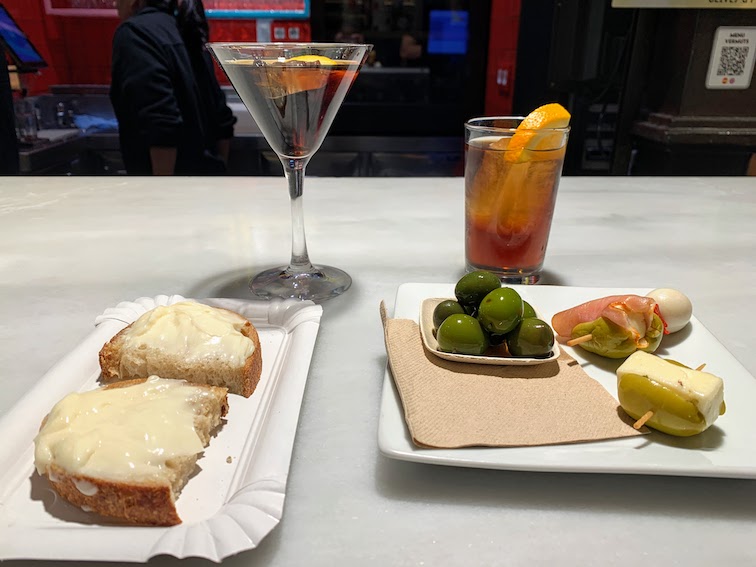

This looks like a Mike and Mary trip if I ever saw one! Vinita introduced me to the Cabral cheese at Jungle Jim’s. So so good. I can’t wait for your risotto post! And I love the chips idea. I should try that. Takis are all over Europe. I saw them in Ireland, Hungary, Czech, here at the gas station in Germany…
When (not if) you come back to Valencia, we’ll get you to some good paella!
You made our mouth water with all your beautiful pictures. We loved Spain also for the delicious tapas, cheese and cheap wine that was so tasty. So glad you’re exploring so many places and food. I have no doubt you’ll get to 1,000 foods eaten.
Thanks Alice. Isn’t Spain the best? I don’t know if we will ever live long enough to eat all 1,000 foods, but I’m going to give it my best.
Bravo!
I wish you were with us. We would have a blast.